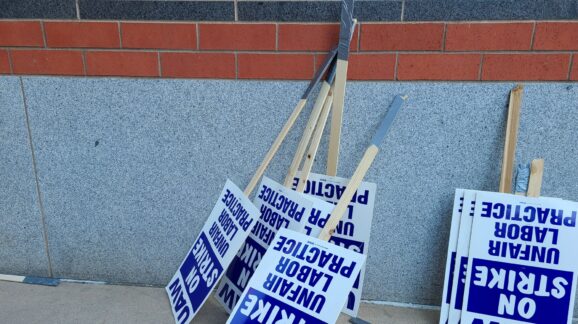UAW’s Fain says new strike strategy has produced no ‘meaningful progress’

Photo Credit: Getty
UAW President Shawn Fain announced Friday that the union would expand its strike against Ford and GM. Fain said an additional 7,000 members would join the current 18,000 who’ve walked out at key plants. That nevertheless puts just one-sixth of the 150,000 UAW members that work for the “Big Three” automakers on the picket lines. The remainder are stilling reporting to their factories for work as usual with the union’s blessing.
These unusual limited strikes have been presented by Fain as a new strategic maneuver to maximize the disruption caused by the manufacturers. Traditionally strikes have involved all of a union’s members walking off the job. Friday’s announcement was a tacit admission that the strategy, begun two weeks ago, has yet to bear any fruit.
“Sadly, despite our willingness to bargain, Ford and GM have refused to make meaningful progress” in contract negotiations, Fain said in a Facebook livestream to members. The UAW president warned members that it might be quite a while before an agreement was reached with Ford or GM.
“We knew it was unlikely that this was going to be quick,” he said.
Fain did say that there had been progress in negotiations with Stellantis, the company that purchased the Chrysler auto brand. As a consequence, there would not be any escalations of strikes at its plants.
The UAW president tried to present the strike expansion as proof of the union’s strength and determination. Yet he rhetorically tripped over himself by emphasizing the importance of striking as an economic weapon for unions even as he said only a fraction of the UAW’s own members would be walking out.
“A union that is not prepared to strike to win is like a fighter that has one hand tied behind his back,” Fain announced, apparently not realizing that only having part of the workers strike suited the one-hand-tied-behind-the-back analogy.
Why not a full strike? That is what unions traditionally do, after all. The reality is that UAW fears it doesn’t have a deep enough strike fund for a prolonged confrontation. The union is instead making a virtue of necessity by striking in a limited manner and presenting that as a “new strategy.”
The UAW strikes have thus far been targeting plants that make parts for dealership. Most car dealerships are independent business that make most of their revenue from servicing existing cars rather than selling new ones. A shortage of parts, UAW hopes, will cause dealerships to pressure the manufacturers to make concessions.
The mood was mixed among the UAW members watching the livestream. “It’s not working,” commented Jesse Gonzales. “If it were, we would not have to continue striking more plants.”